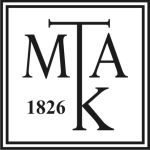The Office of the Head of State of the Slovak Republic between 1939 and 1945
DOI:
https://doi.org/10.15170/Dike.2021.05.02.06%20Schlagworte:
constitution, continuity, political system, president, World War II, SlovakiaAbstract
The paper deals with the constitutional development of the independent Slovakia between 1939 and 1945. It focuses on the position of the president in the context of the Czechoslovak constitutional tradition and authoritarian challanges, which were typical from the end of the 1930’s. The problem of continuity and discontinuity of the state and law is also an important part of the paper. The Slovak constitution was adopted in 1939. The influence of the Southern-European fascist and authoritarian models were strong during the process of constitution-making, but the Czechoslovak constitution of 1920 also had an impact on the legislator. Although the president of Slovakia, Jozef Tiso arrived from the Slovak Catholic and autonomist movement, he became the symbol of pro-Nazi collaboration during the second world war. Tiso had two positions – he was the Slovak president and paralelly the leader of the Hlinka Slovak People Party, which was a dominant political factor in Slovakia. A special act regulated the position of this party and its leader in the constitutional and political system.
Downloads
Veröffentlicht
Zitationsvorschlag
Ausgabe
Rubrik
Lizenz
Open Access Politik: Die Zeitschrift bietet einen offenen und uneingeschränkten Zugang zu ihren Inhalten. Jeder hat das Recht, die veröffentlichten Inhalte herunterzuladen, zu nutzen, zu drucken, zu verbreiten und/oder zu kopieren, und zwar in Übereinstimmung mit international anerkannten ethischen Standards in der Wissenschaft.










